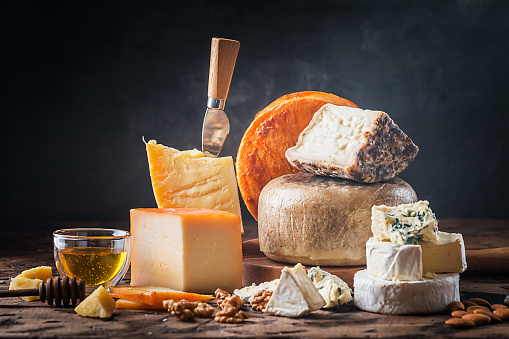The Dog Food market has evolved into a dynamic and essential sector within the broader pet care industry. In 2023, the market achieved a significant valuation of around USD 60.73 billion. Forecasts for the future indicate sustained growth, with an estimated Compound Annual Growth Rate (CAGR) of 3.9% between 2024 and 2032. By 2032, the Dog Food market is anticipated to burgeon to a value of USD 85.69 billion. This article delves into the intricacies of the Dog Food market, exploring its historical evolution, key categories, market dynamics, and the factors propelling its continual expansion.
Historical Evolution:
The history of dog food is intertwined with the domestication of dogs and the recognition of their specific dietary needs. What began as homemade diets for dogs has transformed into a specialized industry dedicated to providing nutritionally balanced and convenient food options for canine companions. The development of commercial dog food gained momentum in the early 20th century, with the formulation of scientifically balanced diets to meet the nutritional requirements of different breeds.
Over the years, the dog food market has witnessed a shift toward premiumization, natural ingredients, and tailored nutrition. Advances in veterinary science and nutritional research have played a crucial role in shaping the industry, ensuring that dog food meets the evolving health and wellness needs of man’s best friend.
Key Categories and Market Dynamics:
The Dog Food market encompasses a variety of categories designed to meet the nutritional needs and preferences of different dogs. Key categories include dry dog food, wet or canned dog food, treats, and specialized diets catering to specific health conditions or life stages. The market dynamics are influenced by factors such as dog owner preferences, awareness of canine nutrition, and the desire for convenience in feeding practices.
Premiumization is a notable trend within the market, with dog owners increasingly seeking high-quality, natural ingredients, and specialized formulations for their furry companions. The market’s response to diverse dietary preferences, including grain-free, organic, and functional ingredients, reflects its adaptability to changing consumer demands.
Health and Wellness Trends:
Dog owners’ increasing focus on the health and wellness of their canine companions has led to a surge in demand for functional and preventive nutrition in dog food. The market responds to this trend by incorporating ingredients that support immune health, joint care, digestive wellness, and overall vitality. Specialized diets addressing specific health concerns or dietary restrictions have gained popularity, aligning with the broader movement towards preventive canine healthcare.
Nutritional transparency and clear labeling indicating the source and quality of ingredients have become paramount. Dog food manufacturers strive to communicate the health benefits of their products to meet the discerning expectations of dog owners.
Globalization and Regional Preferences:
The globalization of the dog food market has led to the introduction of diverse products catering to regional preferences and canine dietary nuances. While certain global brands maintain a strong presence, regional and local players contribute to the market’s vibrancy by offering dog food products tailored to specific tastes and dietary traditions.
In some regions, there is a growing emphasis on raw feeding practices, leading to the emergence of specialized products that align with these preferences. Understanding and adapting to regional variations in dog ownership trends and dietary preferences are key strategies for success in the global dog food market.
Regulatory Landscape and Quality Assurance:
The dog food industry operates within a regulatory framework aimed at ensuring the safety and quality of dog food products. Regulatory bodies set standards for ingredients, labeling, and nutritional claims. Compliance with these standards is essential for building consumer trust and maintaining the integrity of the dog food market.
Quality assurance measures, including rigorous testing of raw materials and finished products, are integral to the manufacturing process. Many dog food companies implement quality control protocols, including traceability systems, to ensure that their products meet or exceed regulatory requirements and provide the expected nutritional value.
Sustainability and Ethical Practices:
Similar to the broader trend in the pet food industry, sustainability and ethical practices are gaining prominence in the dog food market. Dog owners, increasingly conscious of the environmental impact of dog food production, seek products with responsibly sourced ingredients and eco-friendly packaging. Companies are responding by incorporating sustainable practices into their supply chains and exploring alternative protein sources to reduce the ecological footprint of dog food production.
Ethical considerations, including animal welfare and fair labor practices, are also becoming influential factors in dog food purchasing decisions. Brands that align with these values stand to gain favor among socially conscious dog owners.
Market Challenges and Opportunities:
The dog food market faces challenges such as ingredient sourcing, formulation complexities, and consumer concerns about product safety. The scrutiny of certain ingredients, such as grains or additives, necessitates ongoing research and development efforts to address evolving consumer preferences.
Opportunities for growth lie in innovation, with companies exploring novel ingredients, advanced processing technologies, and personalized nutrition for dogs. The rising popularity of online sales channels and direct-to-consumer models presents new avenues for market expansion and consumer engagement.
Technological Advancements and Customization:
Technological advancements play a pivotal role in enhancing the production and customization of dog food. Advanced processing technologies enable the formulation of dog diets with precise nutrient profiles, catering to specific breeds, sizes, and health conditions. Customization, including the creation of personalized dog food blends, is facilitated by data analytics and artificial intelligence, allowing companies to tailor products to individual dog needs.
The integration of smart packaging and IoT (Internet of Things) technologies contributes to product freshness and transparency. These technological innovations not only enhance the nutritional quality of dog food but also offer dog owners greater control and visibility into their canine companions’ diets.
Future Outlook and Humanization of Dogs:
The future outlook for the dog food market is optimistic, with a projected CAGR of 3.9% between 2024 and 2032. The trend towards the humanization of dogs, wherein dogs are considered integral members of the family, will continue to shape the market. As dog owners seek to provide the best possible nutrition and care for their four-legged friends, the demand for premium and specialized dog food products is expected to grow.
Innovations in dog food formulations, sustainable practices, and personalized nutrition will be key drivers of market growth. The industry’s ability to adapt to evolving consumer preferences, technological advancements, and global trends will determine its resilience and success in the dynamic landscape of dog care.








